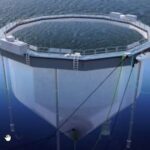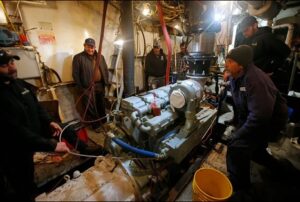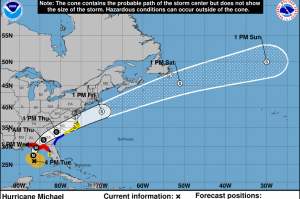Daily Archives: October 3, 2023
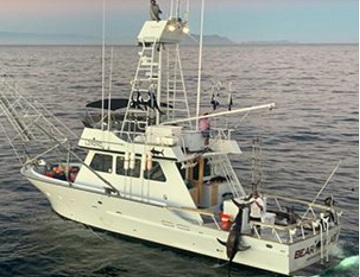
First permits issued for swordfish captains in California
The first commercial fishing permits for the use of deep-set buoy gear in the swordfish fishery in the US state of California were issued by the National Marine Fisheries Service on September 15, marking a significant transition from the large nets that drifted off the West Coast. Gillnets will finally disappear by 2027, replaced mostly by deep-set buoy gear — vertical lines about 150 fathoms long, with a flagpole with a light or radar reflector on top and a bug- and sinker to keep the line anchored vertically. Main lines usually have one to three round hooks with a light attached to shine below the thermocline in 20 to 70 meters (65 to 230 feet) of California water. The gear is designed to be actively maintained, with strike indicators on the surface to alert anglers when a fish is present. >>click to read << 16:23

EPA fines American Seafoods nearly $1 million for Clean Water Act violations
American Seafoods Company is the world’s largest at-sea processor of Alaska pollock and holds the largest allocation of Wild Pacific Hake. The company operates a fleet of seven vessels in the North Pacific Ocean and Bering Sea. The EPA cited the company and the owners of its vessels for hundreds of violations along the Oregon and Washington coasts, including discharging waste in a protected area, failure to monitor discharges and reporting inaccurate information in required annual reports, according to a Thursday statement. “Discharge of seafood processing waste in prohibited areas and within the 100-meter depth contour of Washington and Oregon exacerbates already existing low-oxygen conditions which negatively impact most fishes, crabs and other marine life,” the EPA said. >>click to read<< 10:46
N.L. processors dumped 5 times as much crab in 2023 as they did last year
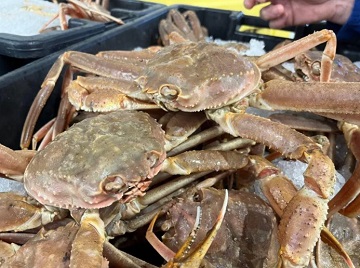 Newfoundland and Labrador fish processors dumped more than 300,000 pounds of snow crab during the past season — more than five times the amount dumped last year — according to data from the provincial Department of Fisheries, Forestry and Agriculture. In 2023, processors dumped 303,202 pounds of crab, compared with 59,239 in 2022 — a 411 per cent increase. Officials have not confirmed the reasons for the increased dumping, but harvesters blame a compressed season and unusually warmer waters. The 2023 snow crab season was marred with conflict from the outset: a six-week standoff over the $2.20-per-pound price that pushed the start of the season well into May, sending harvesters scrambling to catch what they could before cut-off and creating a bottleneck of boats on the water and product at plants. Photos, >>click to read<< 09:46
Newfoundland and Labrador fish processors dumped more than 300,000 pounds of snow crab during the past season — more than five times the amount dumped last year — according to data from the provincial Department of Fisheries, Forestry and Agriculture. In 2023, processors dumped 303,202 pounds of crab, compared with 59,239 in 2022 — a 411 per cent increase. Officials have not confirmed the reasons for the increased dumping, but harvesters blame a compressed season and unusually warmer waters. The 2023 snow crab season was marred with conflict from the outset: a six-week standoff over the $2.20-per-pound price that pushed the start of the season well into May, sending harvesters scrambling to catch what they could before cut-off and creating a bottleneck of boats on the water and product at plants. Photos, >>click to read<< 09:46
Maine State Chamber of Commerce puts spotlight on lobster
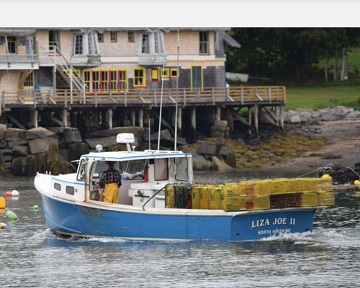 Maine lobster contributes $1.4 billion to the state economy and 4,000 jobs on the shore, from live lobster dealers to processors to workers on the piers. And those numbers don’t include lobster-based tourism, Linda Caprara, interim CEO of the Maine State Chamber of Commerce, noted Sept. 28 in an online panel discussion in honor of Maine Lobster Week. Then, there are the 5,000 licensed lobstermen and their crew who all earn their livelihood on the water. Last year, just below 100 million pounds of lobster landed on docks from Portland to Lubec with a value of about $390 million. “We’re catching a lot of lobster,” said Marianne LaCroix, executive director of the Maine Lobster Marketing Collaborative. >>click to read<< 08:51
Maine lobster contributes $1.4 billion to the state economy and 4,000 jobs on the shore, from live lobster dealers to processors to workers on the piers. And those numbers don’t include lobster-based tourism, Linda Caprara, interim CEO of the Maine State Chamber of Commerce, noted Sept. 28 in an online panel discussion in honor of Maine Lobster Week. Then, there are the 5,000 licensed lobstermen and their crew who all earn their livelihood on the water. Last year, just below 100 million pounds of lobster landed on docks from Portland to Lubec with a value of about $390 million. “We’re catching a lot of lobster,” said Marianne LaCroix, executive director of the Maine Lobster Marketing Collaborative. >>click to read<< 08:51
Rhode Island fishermen fear offshore wind farm project could jeopardize thriving squid industry
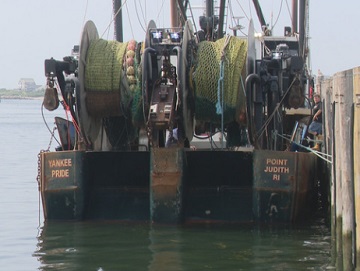 On the coast of Narragansett lies the pulse of the Rhode Island fishing industry. Dozens of boats travel to sea multiple times a day to reel in fish, which are then brought back to shore to be processed at fish houses and packaged for sale. Squid dominates the fishing industry in Rhode Island, but a group of fishermen worry a major wind farm project will put everything they work for at risk. The concerns prompted SeaFreeze to file a federal lawsuit in 2021 to stop the project, which will place 62 turbines off Martha’s Vineyard to power 400,000 homes. Construction is already well underway and by the end of the year, the installation could produce up to 300 megawatts of power. Video, photos, >>click to read<< 07:53
On the coast of Narragansett lies the pulse of the Rhode Island fishing industry. Dozens of boats travel to sea multiple times a day to reel in fish, which are then brought back to shore to be processed at fish houses and packaged for sale. Squid dominates the fishing industry in Rhode Island, but a group of fishermen worry a major wind farm project will put everything they work for at risk. The concerns prompted SeaFreeze to file a federal lawsuit in 2021 to stop the project, which will place 62 turbines off Martha’s Vineyard to power 400,000 homes. Construction is already well underway and by the end of the year, the installation could produce up to 300 megawatts of power. Video, photos, >>click to read<< 07:53

































